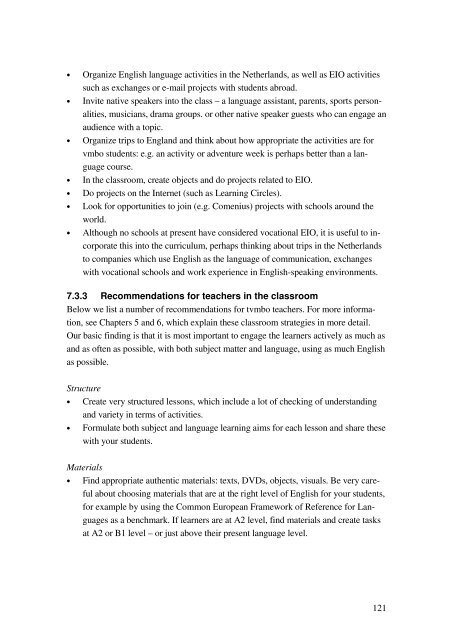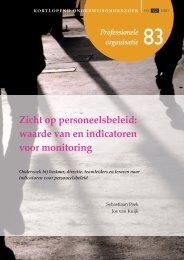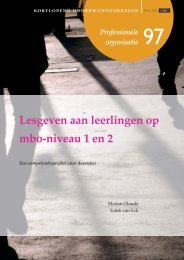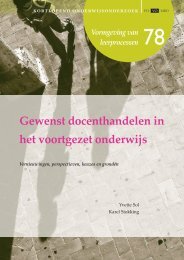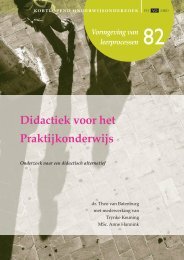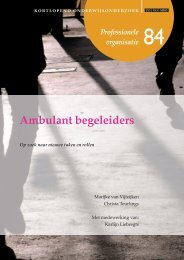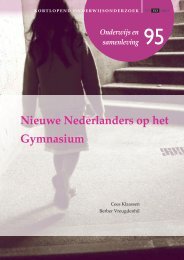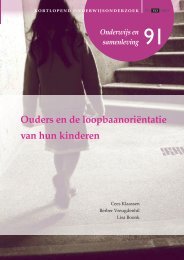Proud to be tvmbo - Kortlopend Onderwijsonderzoek
Proud to be tvmbo - Kortlopend Onderwijsonderzoek
Proud to be tvmbo - Kortlopend Onderwijsonderzoek
Create successful ePaper yourself
Turn your PDF publications into a flip-book with our unique Google optimized e-Paper software.
• Organize English language activities in the Netherlands, as well as EIO activities<br />
such as exchanges or e-mail projects with students abroad.<br />
• Invite native speakers in<strong>to</strong> the class – a language assistant, parents, sports personalities,<br />
musicians, drama groups. or other native speaker guests who can engage an<br />
audience with a <strong>to</strong>pic.<br />
• Organize trips <strong>to</strong> England and think about how appropriate the activities are for<br />
vmbo students: e.g. an activity or adventure week is perhaps <strong>be</strong>tter than a language<br />
course.<br />
• In the classroom, create objects and do projects related <strong>to</strong> EIO.<br />
• Do projects on the Internet (such as Learning Circles).<br />
• Look for opportunities <strong>to</strong> join (e.g. Comenius) projects with schools around the<br />
world.<br />
• Although no schools at present have considered vocational EIO, it is useful <strong>to</strong> incorporate<br />
this in<strong>to</strong> the curriculum, perhaps thinking about trips in the Netherlands<br />
<strong>to</strong> companies which use English as the language of communication, exchanges<br />
with vocational schools and work experience in English-speaking environments.<br />
7.3.3 Recommendations for teachers in the classroom<br />
Below we list a num<strong>be</strong>r of recommendations for <strong>tvmbo</strong> teachers. For more information,<br />
see Chapters 5 and 6, which explain these classroom strategies in more detail.<br />
Our basic finding is that it is most important <strong>to</strong> engage the learners actively as much as<br />
and as often as possible, with both subject matter and language, using as much English<br />
as possible.<br />
Structure<br />
• Create very structured lessons, which include a lot of checking of understanding<br />
and variety in terms of activities.<br />
• Formulate both subject and language learning aims for each lesson and share these<br />
with your students.<br />
Materials<br />
• Find appropriate authentic materials: texts, DVDs, objects, visuals. Be very careful<br />
about choosing materials that are at the right level of English for your students,<br />
for example by using the Common European Framework of Reference for Languages<br />
as a <strong>be</strong>nchmark. If learners are at A2 level, find materials and create tasks<br />
at A2 or B1 level – or just above their present language level.<br />
121


